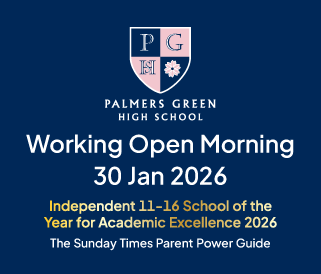Dyslexia at Secondary School Age: What You Need To Know
In previous articles we have discussed signs of dyslexia at primary school age and during Early Years. It can be hard to identify and diagnose dyslexia at a younger age and so some children do reach secondary school without having received a formal diagnosis.
Signs Of Dyslexia At Secondary School Age
A child with dyslexia may be very knowledgeable and capable at oral communication. They may be very creative or great at sports - but they will also struggle with certain things. Difficulties will be different for every child but these can include:
Signs Of Dyslexia In Writing
- A lower standard of written work compared to oral ability
- Poor handwriting with badly formed letters - or good handwriting, but performed very slowly
- Written work is messy with lots of crossing out, different attempts at spelling the same word
- One word spelled in different ways across the same piece of work
- Difficulty with punctuation and grammar
- Confusion between upper and lower case letters
- Can write a lot, but loses the point of the piece
- May write very little, but is direct and to the point
- Has great difficulty in making notes during lessons
- Difficulty with organising homework
- Finds it difficult to complete tasks on time
- Seems to know more than they’re able to express on paper
Signs Of Dyslexia In Reading
- Reading aloud is hesitant and laboured
- Misses out or adds extra words when reading
- Can read at a reasonable rate, but has a low level of comprehension
- Does not recognise familiar words
- Misses a line or reads the same line twice
- Loses their place easily or needs to use a finger or place marker
- Finds it difficult to identify the main point in a piece of writing
- Finds it difficult to use a dictionary or directory
Signs Of Dyslexia In Numeracy
- Finds it difficult to remember times tables
- Finds sequencing difficult
- Confuses different mathematical signs, eg + and x
- Can perform high level mathematics, but needs a calculator for simple sums
- Misreads maths questions that include words
- Finds mental arithmetic difficult
- Finds it difficult to memories formulae
Signs Of Dyslexia In Other Areas
- Confusion between left and right
- Difficulty with learning foreign languages
- Does not show preference for left or right handedness
- Finds it difficult to find the right name for an object
- Finds it difficult to process information at speed
- Finds it hard to understand complicated questions
- Finds it hard to remember a list of tasks to be performed, but can do one at a time
Signs Of Dyslexia In Behaviour
- Is overly disorganised or forgetful with lessons, homework, PE kit etc
- Can appear immature or clumsy
- Finds it difficult to relate to others, read body language etc
- Often ends up in the wrong place at the wrong time
- Can become excessively tired due to the extra effort and concentration required in lessons
As mentioned in our previous articles, if your child expresses only one or two of these signs there is probably no cause for concern. The likelihood of dyslexia arises when several of these signs arise, alongside areas of clear ability.
What To Do If You Are Worried Your Child Has Dyslexia
Your first port of call should be your child’s teacher, or the SENCo (Special Educational Needs Coordinator).
Dyslexia can only be formally diagnosed with a Diagnostic Assessment which must be performed by a certified dyslexia assessor. However, your child’s school should not require a formal diagnosis in order to begin providing support for your child.






